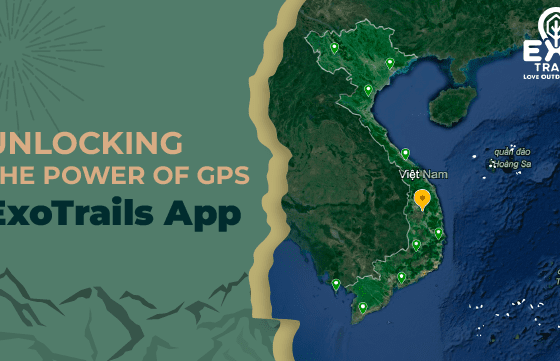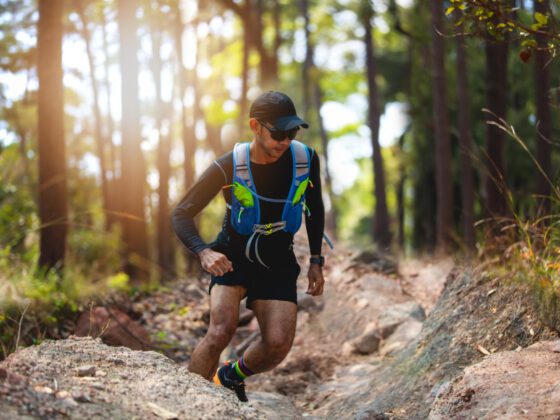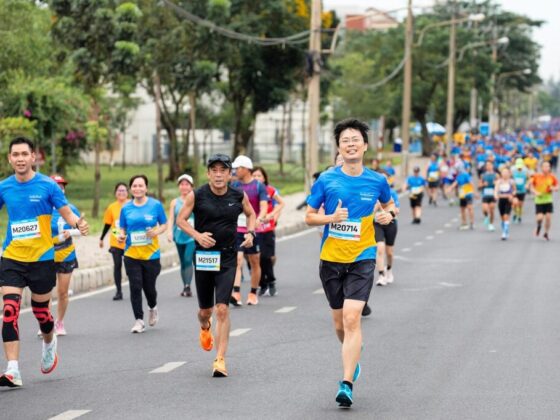Table of Contents Show
✍️ AI is summarizing:
Trail running, with its unpredictable terrain and scenic routes, often lacks the straightforward metrics of road running. Unlike the clear-cut distances and times of paved paths, the wilderness presents a unique challenge: how do we accurately measure distance on trails when the path itself is ever-changing?
Related post:
- Best Biking Trails in Vietnam – Top 10 Lesser-Know Eco Paradises
- Outdoor Activities In Vietnam: The Potential Adventure Paradise
- Embrace The Tranquility Of Solo Hiking: Finding Peace in Nature
Fear not, fearless trail runner, for there are ways to assess your growth beyond the confines of races and precise measurements. Here, at ExoTrails, we explore 5 methods to track your progress on the untamed trails, allowing you to celebrate your achievements and chart a course for further improvement.
Embrace the loop: A tool to Measure distance on trails
One of the most effective ways to measure progress on your hiking or biking adventures is by regularly running looped trails. Choose a trail that offers a variety of terrains, elevations, and technical challenges to ensure a comprehensive assessment. By consistently completing the same loop, you can track your improvements in pace, endurance, and overall comfort level.

Pay attention to how you navigate tricky sections more confidently and efficiently over time. Not only does this method provide valuable insights into your performance, but it also helps you measure distance on trails consistently and reliably.
The ExoTrails App has tons of options to choose from with different terrain, elevations, and levels of difficulty. It allows athletes to choose for themselves or even create their routes to share. Creating a loop or two that you can use to benchmark your progress on a moderate-to-hard effort day can be a handy way to see how you’ve progressed over time.
Conquer the climb: Mastering hills for enhanced strength and stamina

Hills are a significant aspect of trail running, demanding strength and stamina. Designate specific hills or ascents on your favorite trail and incorporate them into your training routine. By regularly tackling these inclines, you can measure progress through increased speed, improved form, and enhanced cardiovascular endurance. Improving on hills is a clear indicator that your trail running skills are advancing.
Hills can be a simple yet effective way to measure distance on trails and improve your running fitness. Just like running 400-meter intervals on the track, select a hill nearby or on a favorite trail and run it several times at a fast pace. Rest, jog, and repeat. To track your progress, note your time for each run or measure the distance you cover on the hill. This hill training method is a great way to increase your speed, strength, and endurance.
Beyond the pace: Measure distance on trails and finding your inner compass

When switching from roads to trails, one of the hardest aspects to wrap our brains around is the concept of effort versus pace. To help gauge ourselves for the shift, expert trail coaches usually recommend incorporating practicing effort-based workouts and runs in your training.
When starting on your running journey, it’s a good idea to begin by measure distance on trails to find your ideal pace. A 5K to 10K run can help you gauge the effort level required for each pace and distance. By tuning into how your body feels at different effort levels during training, you can better understand the pace needed for your race. While various factors can influence your pace on the trails, effort level remains a reliable metric to measure, regardless of terrain, elevation gain, or other variables in your adventure.
Beyond the miles: Building endurance and measure distance on trails
Trail running is not just about speed; endurance plays a crucial role. As you progress, focus on increasing your pace. Gradually extend the duration of your trail runs, emphasizing steady pacing and consistent energy levels. This approach helps build endurance, allowing you to cover longer distances comfortably.

When transitioning from road running to trail running, it’s essential to measure distance on trails accurately. While you may not cover as much ground on trails within the same timeframe, consider the increased vertical feet and overall effort required. Your body doesn’t gauge progress by mileage alone, but by the overall stress it experiences during training.
Our experts advise that athletes focus on training by time versus distance for athletes going from road to trail. Try to aim a little further in an hour run this month versus last month. Overall, gauging how comfortable you feel on the trail and perceived exertion is a great start.
While this training mindset isn’t easy to reframe. If you’re unsure how long a loop on the trails might take you, start with out-and-backs or going up and down a hill, enjoying the negative split as you run down.
Measure distance on trails: Adapting to diverse terrain
One of the best ways to measure distance on the trails is to explore diverse terrain. If you’ve been running on trails throughout different regions or even areas of the city, you might realize how different paths can be depending on their location. Benchmark your progress by tackling trails over varying surfaces, from soft dirt to rocky paths and hillier routes.

These transitions challenge different muscle groups and improve your overall adaptability. As you become more adept at handling various surfaces, you’ll notice enhanced stability and control during your runs. For instance, if you want to improve your technical downhill running over loose scree but you’re completely new to running over rocks, start with a handful of pebbles or crushed gravel.
To improve your trail running technique, start by focusing on a familiar segment of a pebble-filled trail. Practice your form and get comfortable with the terrain before introducing new challenges. Gradually increase the difficulty by exploring trails with obstacles you haven’t encountered before, such as large rocks or loose scree. To track your progress and measure distance on trails, consider using a GPS watch or smartphone app. This will help you monitor your performance and set achievable goals.
The trail less traveled: A journey of progress and discovery
With unpredictable terrain and scenic routes, trails don’t always offer straightforward metrics of road running, especially without races to gauge our improvement. However, by strategically incorporating looped routes, hill repeats, segments, technical trail proficiency, pace, and variety in trail surfaces into your training regimen, you can effectively benchmark your progress.
Conclusion
Beyond traditional races, there are numerous non-competitive ways to track your progress and measure distance on trails. These methods not only offer tangible evidence of improvement but also contribute to the overall joy and fulfillment of trail running. After all, losing yourself in the beauty of the trail is likely one of the main reasons you started this sport. So, lace up your shoes, embrace the adventure, and, if you’re interested, periodically check in with your progress by measure distance on trails. Follow our official Facebook page now to receive more interesting information.










I don’t think the title of your article matches the content lol. Just kidding, mainly because I had some doubts after reading the article.